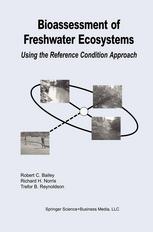

Most ebook files are in PDF format, so you can easily read them using various software such as Foxit Reader or directly on the Google Chrome browser.
Some ebook files are released by publishers in other formats such as .awz, .mobi, .epub, .fb2, etc. You may need to install specific software to read these formats on mobile/PC, such as Calibre.
Please read the tutorial at this link: https://ebookbell.com/faq
We offer FREE conversion to the popular formats you request; however, this may take some time. Therefore, right after payment, please email us, and we will try to provide the service as quickly as possible.
For some exceptional file formats or broken links (if any), please refrain from opening any disputes. Instead, email us first, and we will try to assist within a maximum of 6 hours.
EbookBell Team

0.0
0 reviewsAquatic ecosystem assessment is a rapidly developing field, and one of the newer approaches to assessing the condition of rivers and lakes is the Reference Condition Approach. This is a significant advancement in biomonitoring because it solves the problem of trying to locate nearby control or reference sites when studying an ecosystem that may be degraded, a problem that bedevils traditional approaches. Rather than using upstream reference sites in a river system or next-bay-over reference sites in a lake, an array of ecologically similar, least-exposed to stress sites scattered throughout a catchment or region is used. Once the reference condition has been established, any site suspected of being impacted can be assessed by comparison to the reference sites, and its status determined. The Reference Condition database, once formed, can be used repeatedly.